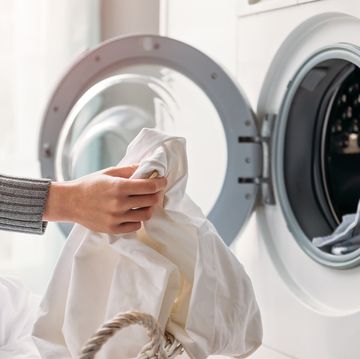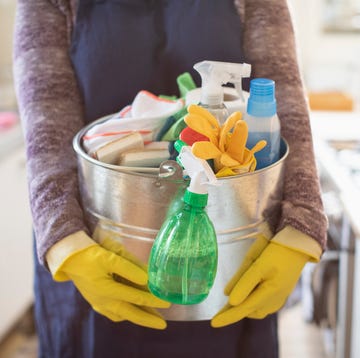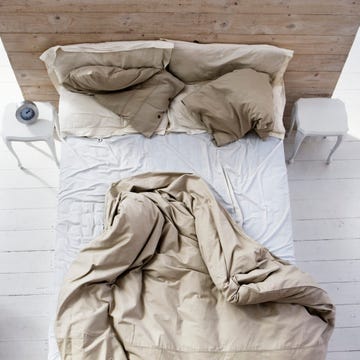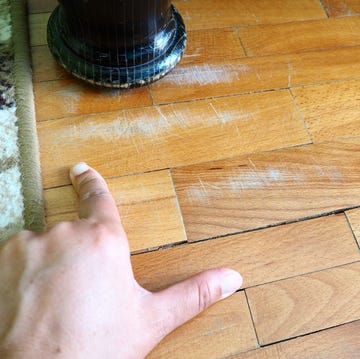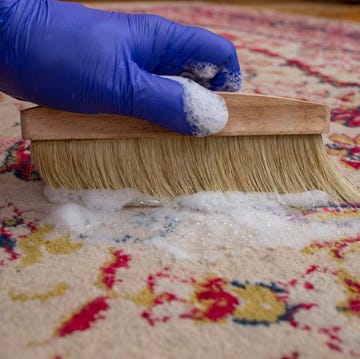Your freezer is essential for keeping on top of food waste. Leftovers are stacked in here, rather than thrown in the bin, and items we know we won’t have time to eat are saved for a later date. As long as the freezer isn’t overfilled (one of the bad habits to break with your freezer), it will run efficiently and extend the shelf life of your food.
However, if you forget about what’s in there and leave items for too long, freezer burn can take its toll. But what exactly is freezer burn and how concerned should you be? Here, we break down everything you need to know and how you can avoid freezer burn in the future.
What is freezer burn?
Freezer burn isn’t actually a burn. It happens when frozen food becomes discoloured (often in patches) after being subjected to the air and losing its moisture. Ice crystals generally appear over the surface too.
What causes freezer burn?
Freezer burn is caused by the cold, dry air that these appliances need to have in order to do their job. It takes time to occur, so it won’t show on items which have been recently frozen. However, over time, the air removes moisture from the frozen food, causing it to dry out. But how can water evaporate in freezing temperatures? The answer: it doesn’t! Instead, it sublimates – goes straight from being a solid (ice) to a gas (water vapour), then sublimates back to a solid, forming ice crystals on the surface of the food.
What does freezer burn look like?
Freezer burn shows up as discoloured patches, often shrivelled and/or covered in ice crystals. The spots can feel dry and rough too, and will still persist after defrosting.
What foods get freezer burn?
The foods freezer burn impacts most are solids with a moisture content – meat, fish, fruit, vegetables (including courgettes and runner beans) and baked goods are the most susceptible. Only very dry things (such as fully cooked meringues) or very liquid things (stock) tend to fare better.
Is freezer burned meat safe to eat?
Freezer burned food is still safe to eat, but it might not taste the best. The ‘burnt’ bits can be a little dry, tough or chewy – especially with meat. You might find the food becomes bland, too, as the sublimation process can also pull out some of the flavour molecules.
Is freezer burned chicken safe to eat?
With their high water content, chicken breasts (and other meat cuts) seem particularly susceptible. Sadly, there’s no way to fully reverse the freezer burn, but it doesn’t mean you have to throw away the item either. You can either cut off the affected parts after defrosting and cook as normal, or you can use a cooking method that helps retain moisture, such as stewing or poaching.
Is freezer burned bread safe to eat?
Again, there’s no way to fully reverse the freezer burn on baked goods. If the whole item is shrivelled, then it might not taste as good as it was prior to freezing, so it’s probably best to sample it once it’s defrosted and work out whether it’s something you actually want to eat. If it’s just patches, you can cut off the affected parts after defrosting. Alternatively, toast the bread (it might just be a little drier) or make croutons: cut it up, toss it with oil, dried herbs and seasoning on a baking tray and cook it in the oven until golden. The cooking process, plus the flavour of the herbs and the seasoning, will hopefully mask any freezer burnt taste.
How long should you store things in the freezer to avoid freezer burn?
All foods have different guidance on how long to keep them in the freezer before the quality starts to get compromised. Things like meat and fish vary between 2-3 months, whereas soups, veg and baked goods vary between 3-6 months. Some cheese can be between 6-12 months.
How do you avoid freezer burn?
How to package food to avoid freezer burn? It’s simple: make sure there’s as little air as possible around the food and wrap it up tightly. When wrapping up items for freezing, use clingfilm, waxed paper or an eco wrap around the surface of the food and push as much air out as possible so the wrap sits directly against it with no air bubbles. If you find your frozen goods seem particularly susceptible, or you want to stash things for a long time, you can invest in a vac-pac machine to eliminate all air and seal up your food like a pro.
How do I fill the freezer in a way to stop freezer burn?
There’s no way of filling your freezer to stop freezer burn, but it’s good practice to not over- or under-fill your freezer. Too much food means air can’t circulate and certain parts of the freezer will be warmer than others; too little food can affect the energy efficiency of the appliance, as already frozen food will help new additions to freeze faster. Aim for the freezer to be about three-quarters full.
It’s also a good idea to make sure the foods within your freezer are rotated regularly. By filling your freezer from back to front when you restock, you can make sure older items are used first, giving freezer burn less time to take hold. For any leftovers, make sure they’re labelled with what they are and the date they were frozen, so you know how long they’ve been there. The longer items remain frozen, the more likely the quality will diminish. Throw away anything you don’t recognise and save space in your freezer by removing packaging.





